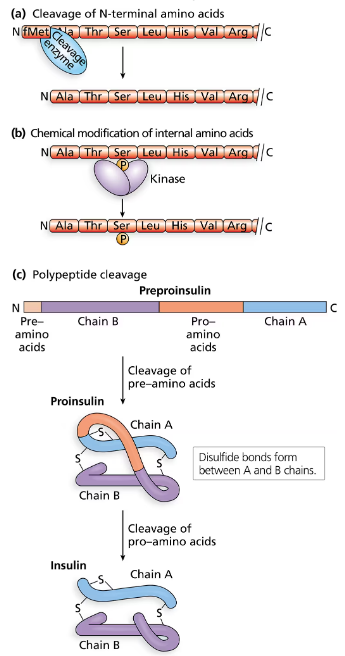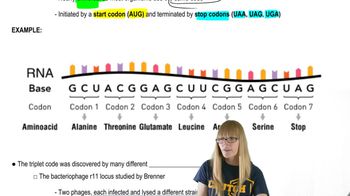An early proposal by George Gamow in 1954 regarding the genetic code considered the possibility that DNA served directly as the template for polypeptide synthesis. In eukaryotes, what difficulties would such a system pose? What observations and theoretical considerations argue against such a proposal?
Table of contents
- 1. Introduction to Genetics51m
- 2. Mendel's Laws of Inheritance3h 37m
- 3. Extensions to Mendelian Inheritance2h 41m
- 4. Genetic Mapping and Linkage2h 28m
- 5. Genetics of Bacteria and Viruses1h 21m
- 6. Chromosomal Variation1h 48m
- 7. DNA and Chromosome Structure56m
- 8. DNA Replication1h 10m
- 9. Mitosis and Meiosis1h 34m
- 10. Transcription1h 0m
- 11. Translation58m
- 12. Gene Regulation in Prokaryotes1h 19m
- 13. Gene Regulation in Eukaryotes44m
- 14. Genetic Control of Development44m
- 15. Genomes and Genomics1h 50m
- 16. Transposable Elements47m
- 17. Mutation, Repair, and Recombination1h 6m
- 18. Molecular Genetic Tools19m
- 19. Cancer Genetics29m
- 20. Quantitative Genetics1h 26m
- 21. Population Genetics50m
- 22. Evolutionary Genetics29m
11. Translation
The Genetic Code
Problem 29a
Textbook Question
A research scientist is interested in producing human insulin in the bacterial species E. coli. Will the genetic code allow the production of human proteins from bacterial cells? Explain why or why not.
 Verified step by step guidance
Verified step by step guidance1
Understand that the genetic code is nearly universal, meaning that the codons (triplets of nucleotides) that specify amino acids are the same in almost all organisms, including humans and bacteria like E. coli.
Recognize that because of this universality, the mRNA transcribed from a human insulin gene can be translated by the bacterial ribosomes to produce the same amino acid sequence as in human cells.
Consider that while the genetic code allows the production of the correct protein sequence, other factors such as post-translational modifications and proper protein folding might differ between human and bacterial cells.
Note that to produce human insulin in E. coli, the human insulin gene must be inserted into a bacterial plasmid with appropriate regulatory sequences (like a bacterial promoter) to ensure expression in the bacterial system.
Summarize that the genetic code's universality enables bacteria to produce human proteins, but successful production also depends on gene cloning techniques and bacterial expression systems.
 Verified video answer for a similar problem:
Verified video answer for a similar problem:This video solution was recommended by our tutors as helpful for the problem above
Video duration:
1mPlay a video:
Was this helpful?
Key Concepts
Here are the essential concepts you must grasp in order to answer the question correctly.
Universal Genetic Code
The genetic code is nearly universal across all organisms, meaning that the same codons specify the same amino acids in bacteria and humans. This universality allows bacterial cells like E. coli to translate human genes into functional proteins, such as insulin.
Recommended video:
Guided course

The Genetic Code
Gene Expression in Prokaryotes vs. Eukaryotes
While the genetic code is universal, differences exist in gene expression mechanisms between eukaryotes and prokaryotes. For example, human genes contain introns that bacteria cannot process, so the gene must be modified (e.g., using cDNA) for proper expression in E. coli.
Recommended video:
Guided course

Prokaryotic Transcription
Recombinant DNA Technology
Recombinant DNA technology involves inserting a human gene into a bacterial plasmid to produce human proteins in bacteria. This method enables E. coli to produce human insulin by expressing the inserted gene under bacterial control sequences.
Recommended video:
Guided course

Recombination after Single Strand Breaks
Related Videos
Related Practice
Textbook Question
565
views


